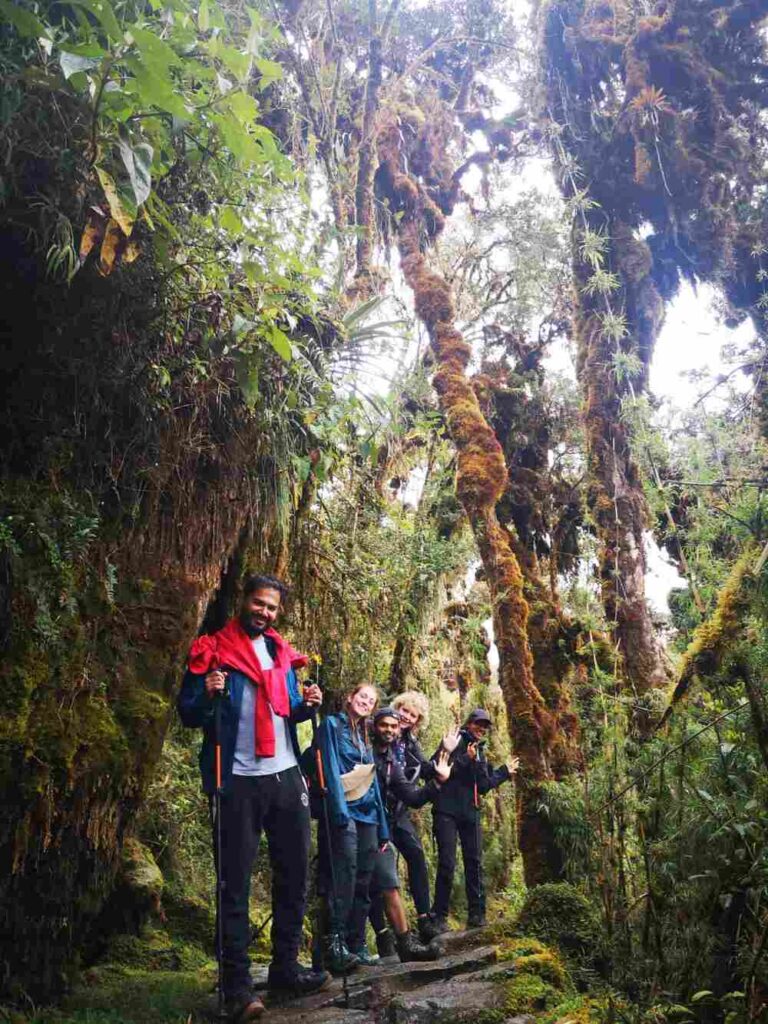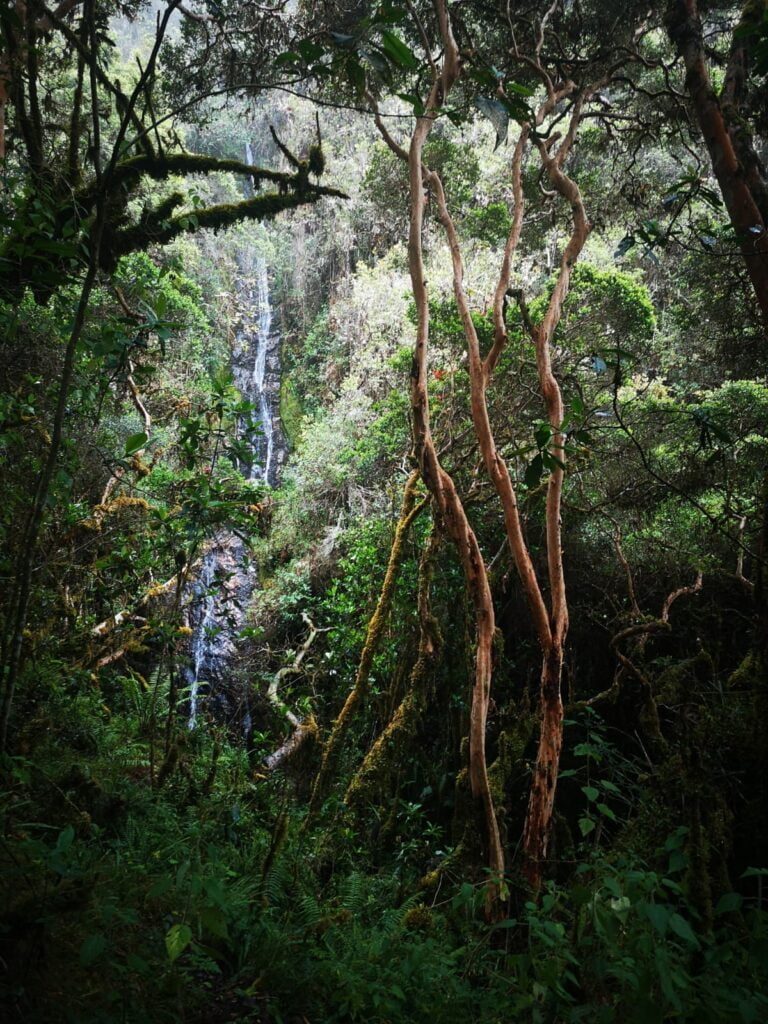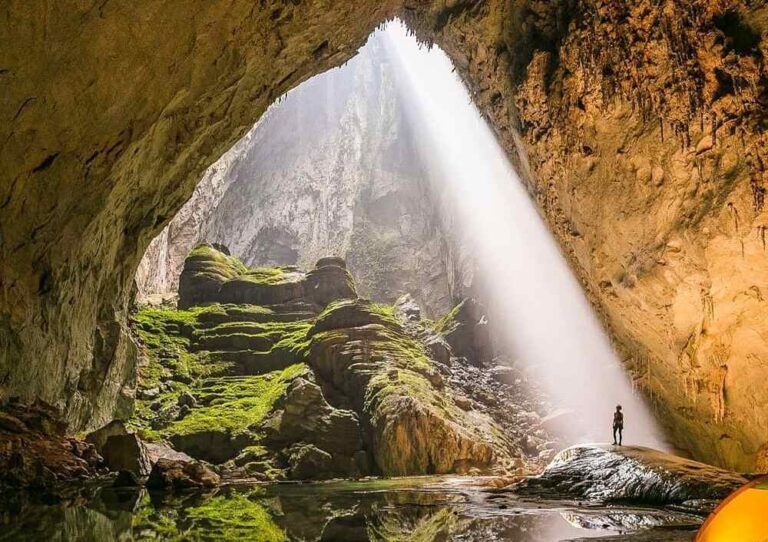So, you want to hike the Inca Trail? I can help with that!

Peru is one of my favorite countries. The people, the animals, the food, the landscapes! Best of all, the hiking!
Peru wow-ed me in so many ways but what truly had me smiling was that every road led to something historic and beautiful. One of those routes, however, is the Inca trail.

I really think that this trail is a right of passage, it was filled with so much magic. The strength and mental determination needed to complete the Inca trail is not for the weak, but the reward at the end was worth every struggle. For that reason, I will always encourage others to hike this trail.
As you can guess, in this post I’ll be covering my experience hiking to Machu Picchu on the trail, what you should expect when you take your trek, and some history to make the trek even more exciting when you embark!
Where The Trail Leads
If you’re like me, you enjoy learning and seeing the many wonders this world has to offer. One of the amazing and well-known wonders is Machu Picchu.

Machu Picchu is a beautiful site of ancient city ruins atop a mountain, secluded and hidden by surrounding landscapes high in the clouds. It truly is amazing. But in my opinion – and I’m expecting, much in your interest as well – it’s one of the ancient trails that has caught your attention: The Inca Trail.
About The Inca Trail
The Inca trail is a path through the mountain passes originally built between 1400 – 1500s that leads directly to Machu Picchu in Peru. The trail is a challenging uphill hike carved into stone by ancient hands, but it is considered to be one of the most scenic hiking trails.

How Long is the Inca Trail
It is a 3 – 4 day hike, covering 43 km (26 mi), through multiple microclimates, numerous mountain passes and summits, and other ancient ruins. It ends through the Sun-gate pass that promises the most breathtaking first view of the city.
The Inca Trail Difficulty
Now, the trail is long, and mostly uphill, so it can be difficult. Knowing what to expect when on the trek means that you can be prepared for whatever it tries to throw at you. With further ado, let’s get started:
Stairs on the Inca Trail
The trail is mostly uphill, and that comes with a lot of stairs. Like, A LOT of stairs.
Most of days 2 and 3 are all climbing up and down many series of stairs. It’s tiring, and your legs will hurt, but they will look so good at the end of it all!

Some sections of the trail’s stairs are boulders that have been placed down as steps, but there are many sections of the stairs where the steps have literally been carved out of a single stone. Over hundreds of years of people walking and elemental erosion, this can make for some slippery moments on the trail.

Running Porters
There are multiple companies that offer tours through the Inca trail, each coming with its own sets of porters. These porters carry the tents, food, equipment for cooking, and everything else you need for decent camping at your rest spots.
The porters hike this trail almost daily, so believe me when I say these people run. They speed past all of the tour groups with backpacks that weigh their body weight + some on their backs to ensure they are the first ones at camp to set up.

I thought I was a decent experienced hiker, but it was quite humbling seeing people many years my senior sprint past me. Especially as I was trying not to pass out at the side of the trail.
Some of the senior porters even have races with the newer team members for fun. They will leave you in the dust, so be sure to stay out of their way (they are all really nice individuals, but they should also all be in the Olympics).
Did you know
The world record for the fastest time completing the Inca trail is held by a porter, at 3 hours and 28 minutes.
Cool Campsites
As you make your way up many mountains, the views get even more extraordinary. You hike between mountains, up and over them, and in between so many different micro-ecosystems. All the campsites are basically on the Inca Trail, so you can camp in these super cool spots too!

These campsites are often shared between all of the tour companies and groups, so there are hundreds of tents set up for everyone which makes a cute little hiking village.
If you are a social butterfly, this is also a perfect time to meet others outside of your hiking group or tour company.
Amazing Nighttime Stars
At night, you are so close to the sky and so far away from any towns or cities. On a clear night, the only thing lighting up your view is a sky full of stars.

Almost every night I would stay up late to see the stars and the Milky Way. Especially being on top of a mountain when camping, there isn’t much to block your view of the sky other than flashlights and other people.
Toilets on the Inca Trail
The funniest thing to me when on the trail was the toilets. Or rather the lack of them.
There are shared bathroom amenities, however, I would not call them toilets, but rather, luxury holes in the ground.
I cannot complain, because private stalls are provided – which is a blessing not often offered in the woods – with a tiled hole dug into the ground, and a string attached to the ceiling to flood the stall with water.
Also, please bring your own toilet paper! With how many people use the washroom amenities a day, and how hard it is to get supplies to any spot on the trail, toilet paper is not provided in the stalls.
In other words – If you take a dump and don’t bring toilet paper, you are best out of luck…
Challenges of Hiking the Trail
The Elevation
The Andean Mountain range is no easy walk in the park. Mountains vary between 2,200m (7,218ft) and 4,200m (13,780ft) above sea level. The thin air takes some adjusting to when you first start hiking, so remember to take it slow and remember to stay calm.
If you’re an asthma baddie like me, remember to take your inhaler before and during the hike! You will need it.

Altitude Sickness
Altitude sickness affects everyone differently, so it’s hard to say how anyone will react to it beforehand. The best advice I can give is to drink lots of water, have electrolytes, and remember to eat, and the coca candies/tea are amazing – give them a try.
Some people are able to get their hands on altitude sickness pills, these may be handy to some but I was recommended to naturally let your body adjust.
Injuries on the Trail
The trail is pretty rough terrain and very thin most of the time. There aren’t any vehicles that can pick people up or offer help. If someone gets seriously injured on the trail, the evac will include a very interesting, very bumpy mule ride down to the closest exit of the trail.

Bring a little first aid kit for yourself. You can buy these at any supermarket and it came in handy on my trek. For those prone to blisters, headaches, muscle soreness, etc., best to try to pack prepared for that through a personal injury kit. If you are wondering what to pack, I have a post for what to pack when hiking the trail.
Bugs on the Inca Trail
The rainforests are quite wet as you can imagine, and they are full of bugs! I like to pack a travel-size pack of mint mouthwash – this sounds odd but bugs hate the smell of mint. Dab some on your neck and you are golden, plus it doesn’t hurt the bugs.

The Mental Game
Much like any hiking adventure, a strong mental game is key on those hard days in the clouds. When the legs are shaking and the sweat is pouring down your face, remember you are walking a path from the ancients, it’s not supposed to be easy but it is as sexy as ever to say you’ve completed it.
Weather Conditions on the Trail



The weather on the Inca Trail can vary, and conditions may change rapidly. The dry season, from May to September, is considered the best time to trek, with daytime temperatures ranging from 50°F to 70°F (10°C to 20°C). The wet season, from October to April, brings rain and more challenging trail conditions.
Hot Daytime Hiking
You walk through a series of different climates each day, and sometimes multiple in a few hours.
In the valleys between mountains (and where you start hiking), the temperature can be quite hot but do remember, you will rarely be in the valleys.
Cold Nighttime Climate
Although the day can get quite hot, nights can be cold, especially at higher elevations. You are sleeping on top of mountains each night and it can get close to 0 degrees Celsius. Bring many layers, some thermals, a hat, and gloves to keep warm inside and outside the tent.

Why The Hike is Worth it
There aren’t many trails out there that allow you to pass through 500-year-old architectural remains through some of the most beautiful mountains out there.
Never before have I walked through a hot desert, a cloud forest, a rainforest, and snowfall on the same day. I believe it is truly the climb of a lifetime that offers so much mental perseverance, but it’s also the most rewarding hike I’ve done.

Overall, hiking the Inca Trail is a challenging and rewarding experience. Proper preparation, including physical conditioning and packing appropriate gear, is essential to ensure a safe and enjoyable trek.
Booking Flights
I like to use Booking.com when looking for flights. It can be helpful for looking at accommodations and finding attractions to visit on the days off too!
Related Posts
About the Author

Hi, I’m Shannon. A small travel lover with a laptop.
I’m an avid plane rider and backpacker, currently traveling between lots of working days. This year I am making travel my #1 priority, and I plan to document it as much as I can.






